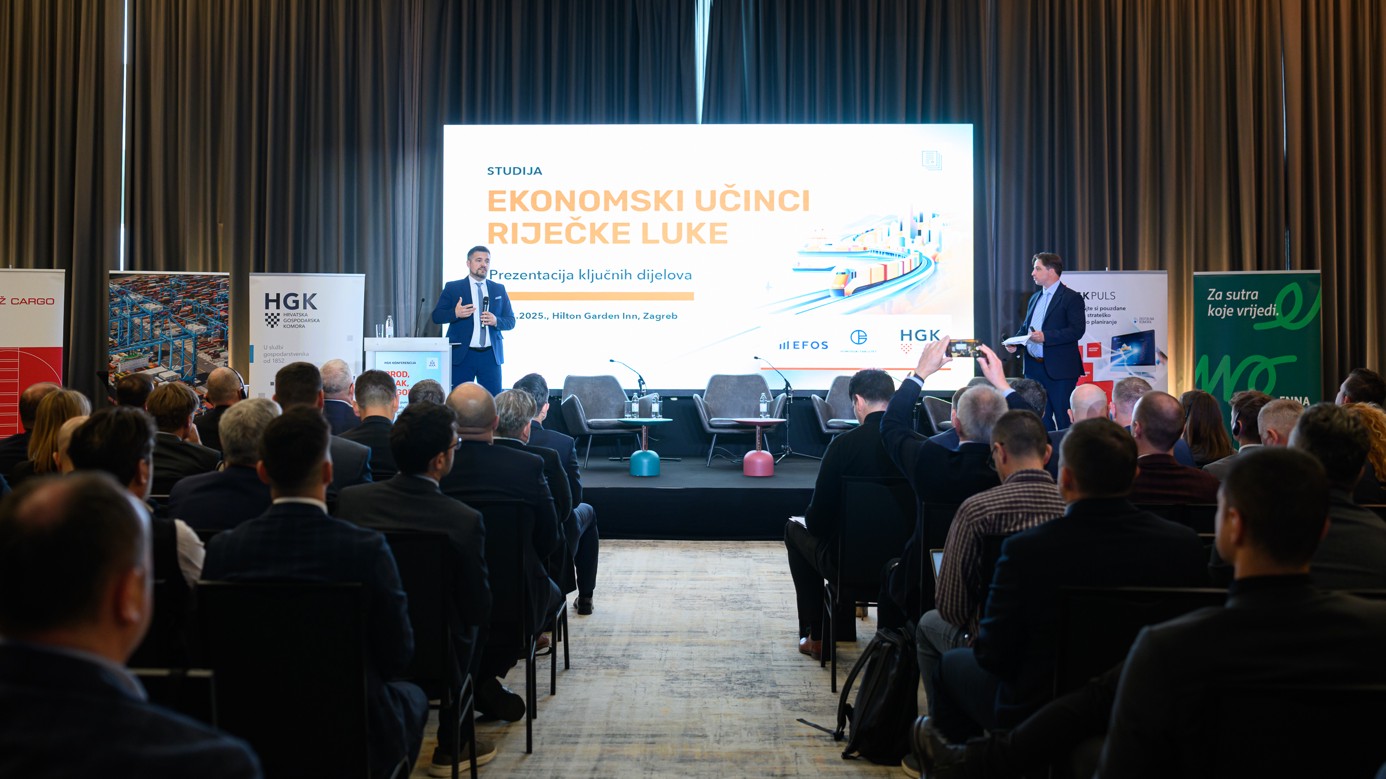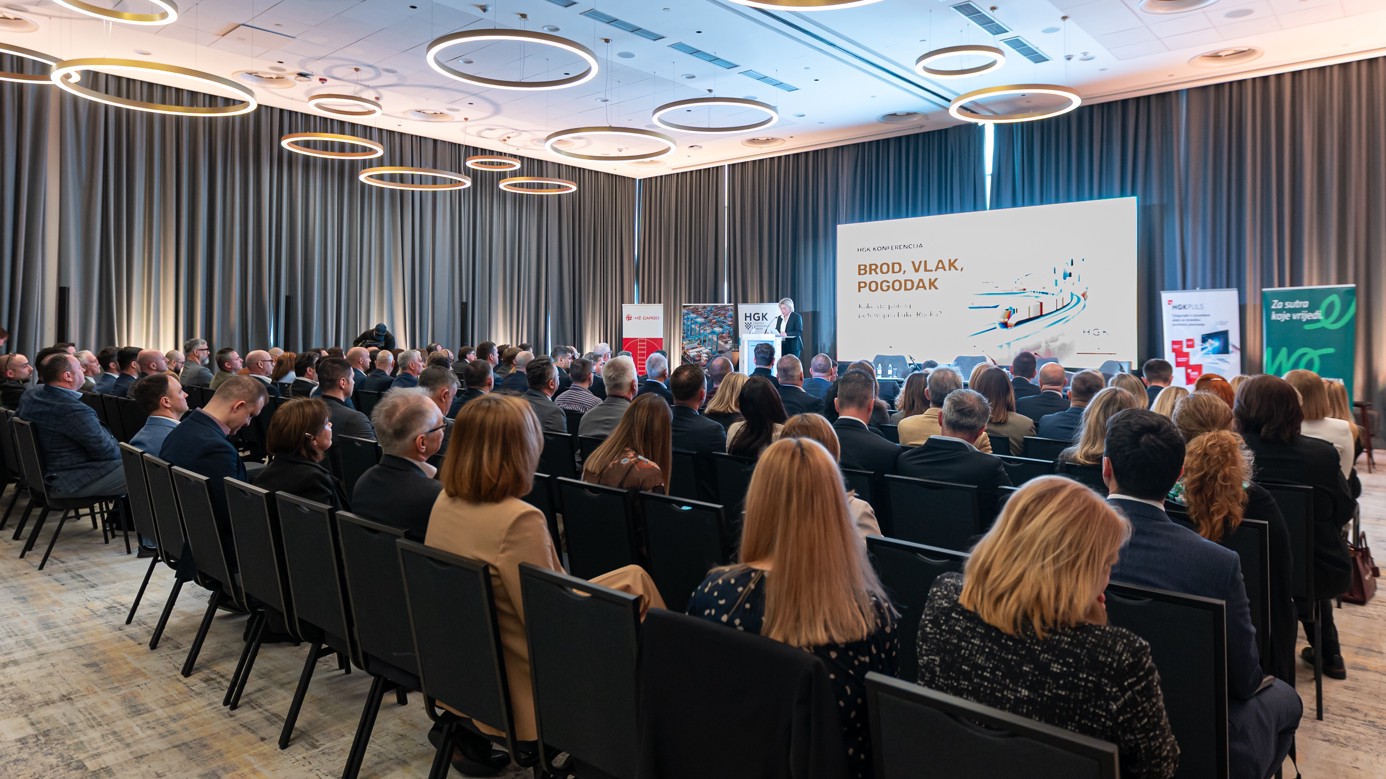Study on the economic impact of Rijeka Port development presented
HGK conference underscores the importance of lowland railway investment
Date publishedApril 16, 2025
Zagreb, April 15, 2025 – At a conference organized by the Croatian Chamber of Economy held in Zagreb on Monday, April 14, 2025, a professional study titled “Economic Impacts of the Port of Rijeka” was presented. The study, authored by experts from the Faculty of Economics in Osijek and the Faculty of Maritime Studies in Rijeka, outlines three development scenarios for the Port of Rijeka based on an analysis of historical trends, the current situation, and projections of traffic and infrastructure development.
Among those present at the presentation were Boštjan Napast, CEO of the ENNA Group, board member Anton Barbir, as well as Gregor Glušič and Petar Glavaš, board members of ENNA Transport and ENNA Logic.
As emphasized during the conference, every euro invested in the port generates €1.40 in economic activity and an additional €1.50 in added value. The development of the port creates positive effects along the entire supply chain, boosting growth in sectors such as transport, logistics, trade, and other related industries.
Currently, the terminals in Rijeka handle 13–14 million tons of cargo annually. Following the opening of the Rijeka Gateway container terminal, which is being jointly developed by ENNA Logic and APMT, cargo traffic is expected to increase to 20 million tons as early as next year. According to the authors of the study, infrastructure investment is key to the port’s continued development.

According to the study’s optimistic scenario, which assumes the completion of the double-track lowland railway between Zagreb and Rijeka by 2032, the Port of Rijeka could evolve into a true logistics hub for the region and become the main gateway to Central and Southeast Europe by 2040. Under this scenario, the port is projected to generate five times more economic activity than it does today—amounting to €3.3 billion and 8,600 jobs across the port, supporting industries, and the wider economy of the Primorje-Gorski Kotar County.
“The key task ahead is the construction of the lowland railway toward Zagreb. I’m always an optimist and pushing for it to be completed as soon as possible,” said Oleg Butković, Deputy Prime Minister of the Republic of Croatia and Minister of the Sea, Transport and Infrastructure, who was among the conference participants.
“What has given an additional boost to development is the historic concession agreement, thanks to which the new container terminal will be operational in just a few months. We have secured cargo traffic and a completed access road connecting the new terminal to the highway. What still needs strengthening is the rail network toward key European corridors,” Butković added.
The baseline scenario of the study predicts moderate but steady growth in port traffic and the implementation of already planned infrastructure investments, resulting in approximately 2,500 new jobs and a total production value related to the port’s operations of around €2.44 billion by 2040. On the other hand, the pessimistic scenario outlines an outcome in which negative risks materialize, such as delays or insufficient infrastructure investment.
“The pessimistic scenario clearly illustrates the cost of delayed investment—missed economic opportunities not only for the port but for the entire country,” said Davor Dujak, one of the study’s authors from the Faculty of Economics in Osijek.
The conference drew significant media attention, with HRT and Nova TV covering the event in their prime-time news programs.
A presentation of the key findings from the Study on the Economic Impacts of the Port of Rijeka can be viewed HERE, and the executive summary is available HERE.

News
#LogisticsMore news >
Study on the economic impact of Rijeka Port development presented

ENNA Transport locomotive driver Valerija Androtić for RTL: „There is no more beautiful job“

Meet the young train drivers of ENNA Transport

Interview with ENNA Transport locomotive driver Valerija Androtić for Index on the occasion of International Women's Day

Railway renovation completed – ENNA Transport trains from the Port of Ploče running again through Bosnia and Herzegovina